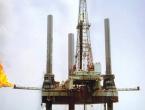Crude Oil Weekly Review: Oil distribution is approaching 80, a new high in the past three years! OPEC+ may be forced to expand production
This week, international oil prices continued to rise for six consecutive years, and the oil distribution approached the 80 mark. The soaring price of natural gas has prompted power companies to switch from natural gas to oil, making people worry about supply. The market looks forward to OPEC+'s decision to expand the current monthly production increase target of 400,000 barrels per day.
NYMEX crude oil futures closed 2.38% higher this week to US$75.74/barrel, a new high since July 6, 2021 to US$76.67/barrel; ICE Brent crude oil futures closed 2.64% higher this week to US$79.24/barrel, refreshing 2018 The highest level since October 22, 2009 is $79.95/barrel.
The price of natural gas has soared, further boosting the demand for fuel
As countries relax travel restrictions imposed by the new crown epidemic, fuel demand may increase, and energy supply and demand bottlenecks will become more prominent. In addition, rising spot prices of liquefied natural gas (LNG) and coal may also further support oil prices. If the northern hemisphere winter proves to be colder than expected, energy prices may still rebound further.
Global natural gas prices have soared, and power producers have turned to using fuel oil or diesel for power generation, which has pushed up oil prices. Power plants in Pakistan, Bangladesh and many countries in the Middle East have begun to replace fuel. The recovery in demand is expected to increase the profitability of refineries and create more room for recovery or new production.
ANZ Bank’s research department said in a report: “Supply tightness continues to cause inventories in all regions to fall.” The agency’s report also stated that rising natural gas prices will also help push oil higher because natural gas has become relatively cheap for power generation.
Commonwealth Bank of Australia commodity analyst Vivek Dhar said in the report: “Oil demand may increase by another 500,000 barrels per day, or 0.5% of global oil supply, as high natural gas prices force people to switch from natural gas to oil consumption. This will further Tighten the oil market, especially when OPEC+'s supply increase is still quite conservative."
ING commodities analysts said in a report: "This shows that we should continue to witness strong oil demand in the next few months, which means that oil supply and demand will be tighter than expected before the end of the year."
Demand rebounded, but capacity release lags behind
Japan’s Minister of Economy and Economy Nishimura Yasunori said that with the decline in the number of new cases and the reduction of pressure on the medical system, Japan, the world’s fifth-largest oil consumer, plans to lift emergency measures against the epidemic in all regions this Thursday (September 30).
As many as 90% of gas stations in major cities in the UK had no gas to fill on Monday, as panic buying deepened the supply chain crisis caused by a shortage of truck drivers. Retailers warned that this could hit Britain, the world's fifth largest economy.
India’s oil imports hit a three-month peak in August and rebounded from a nearly one-year low hit in July. Refiners in the second-largest crude oil importer are hoarding crude oil in anticipation of increased demand.
Arif Mahmood, executive vice president and chief executive officer of the downstream division of Petronas, said that the company also hopes to restart operations of the 300,000 barrels per day refining-petrochemical complex in cooperation with Saudi Aramco before the end of the year.
Eugene Leong, President of BP Singapore and CEO of BP's Asia Pacific and Middle East Trade and Shipping Division, said: "We have seen that as demand rebounds, refining profits have rebounded... But overall, there is still a lot of unused in the world. Production capacity, and a lot of production capacity has already been offline."
Ben Luckock, co-head of Trafigura's oil trading department, said at the 2021 Asia-Pacific Petroleum Conference (APPEC): “With the emergence of new markets and consumers, it seems likely that global oil demand will continue to rise, rather than fall. This increases. The traditional form of energy may have the possibility of a price increase cycle. Although this may be beneficial to oil producers in the short term, it also means that the global economy will have to pay a huge price, which is not in the long-term interests of anyone."
Fujitomi Securities analyst Toshitaka Tazawa said: "In the context of tight supply, market confidence remains strong." He also predicted that ICE Brent crude oil may soon try to challenge the key price of US$80 per barrel.
Goldman Sachs raised its estimate for the price of ICE Brent crude oil at the end of the year from US$80 per barrel to US$90, due to the accelerated recovery of fuel demand after the economy has weathered the impact of the Delta mutant strain and the impact of Hurricane Ada on production Lead to tight global supply.
OPEC+ expected to expand production increase
All eyes in the market are now on the meeting of the Organization of Petroleum Exporting Countries and its allies headed by Russia (OPEC+) to be held next Monday (October 4). Sources said that oil-producing countries will discuss other options in addition to the existing agreement to increase production in November and December by 400,000 barrels per day.
Prior to this, the OPEC+ Joint Technical Committee (JTC) held a meeting to assess the market prospects. It is expected that under its basic scenario forecast, the oil market will have a surplus of 1.4 million barrels per day next year, slightly lower than the previously predicted surplus 160 Ten thousand barrels per day. But before the OPEC+ online meeting on October 4, negotiations between member states are still continuing, and there is no guarantee that they will agree to additional production.
OPEC said on Tuesday (September 28) that oil demand will grow strongly as the global economy recovers from the epidemic in the next few years. The transition is underway.
However, some oil-producing countries experienced supply disruptions. Sources from oil companies in Nigeria and Angola, Africa’s largest oil exporters, warned that due to insufficient investment and thorny maintenance issues that continue to hinder output, these two countries will have difficulty increasing their output to OPEC’s quota level until at least next year. .
As global demand recovers from the new crown pandemic, the Organization of the Petroleum Exporting Countries and its allies (OPEC+) continue to struggle to produce enough oil to meet global demand, which may increase upward pressure on oil prices.
The U.S. maintains communication with OPEC
Energy services company Baker Hughes said in its closely watched report on Friday that the number of active drilling rigs in the United States increased by seven in the week ending October 1, to 528, the most since April 2020.
However, the increase in production in the United States is far from alleviating the shortage of supply in the market. Citigroup’s global market analysts said in a report: “The fundamentals still provide potential support to the market, and OPEC+’s release of production capacity still lags behind the demand recovery.” Citigroup predicts that even if the supply continues to increase, oil will continue to increase in the next six months. There will still be a gap of 1.5 million barrels per day in supply and demand.
White House Press Secretary Psaki said on Tuesday that the White House is in communication with OPEC on the issue of oil prices and is studying various tools to solve its cost issues. The Biden administration of the United States has expressed concern about high oil prices, which was discussed earlier when the US National Security Adviser Sullivan met with Saudi Crown Prince Salman.
Chiyoki Chen, chief analyst at Sunward Trading, said: “Investors are still bullish. The supply interruption caused by the U.S. hurricane lasted longer than expected. At this time, due to the relaxation of the lockdown measures and the widespread vaccination of the new crown, demand is picking up.”
Howie Lee, an economist at OCBC Bank in Singapore, said: “Given that oil prices are so high, they are likely to further increase production. The last time we saw oil prices of US$80, there was much more supply than we are now. I think given that Global energy is tight, and the international market may now need more supply."
Energy Aspects, a consulting agency, expects OPEC+ to extend its decision to increase production by 400,000 barrels per day from August to December. The agency's analyst Virendra Chauhan said that Brent crude oil needs to be maintained at more than $80 to prompt OPEC+ to make such a change.
ANZ Research analysts said in a report: "The OPEC+ meeting to be held next Monday will be critical to the direction of oil prices next week. If production increases by more than 400,000 barrels per day, it will ease the upward pressure on oil prices in the short term."











